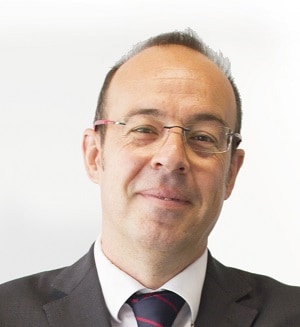Banking giant Goldman Sachs is vying for a small but solid footprint in a fragmented market.

Goldman Sachs may be gearing up for a late start in the transaction banking business, but a lean all-digital platform and its muscular relationships will help the 150-year old financial behemoth claim a prize in the heated corporate finance race.
Transaction banking, including cash management and trade finance, has long been a revenue workhorse for banks, despite paying lower margins than traditional investment banking. Less trading and increased volatility have prompted banks to offer corporates faster payments, cost management and intelligent data for more predictable growth.
“Transaction banking is a source for incremental revenue,” says Brian Kleinhanzl, managing director at Keefe, Bruyette & Woods. “One of the reasons why banks want to go into this business is because customers are sticky and they tend to stay there,” he says.
Goldman Sachs says it is targeting $1 billion in revenues and $50 billion in deposit balances in the first five years from the launch of its transaction banking platform, planned for the second quarter for the US market.
Goldman is focused on a small target, compared with leading players like Citigroup, Bank of America and JPMorgan Chase, whose global treasury services generated $10.3 billion, $8.6 billion and $8.5 billion revenues in 2019.
Seizing a 1% share of a fragmented $80 billion market where other big players have 6% or 7% will yield positive returns, the bank says. “I think we have a right, given our corporate relationships, to participate for a portion of that business,” CEO David Solomon said at a Credit Suisse financial services forum in late February.
 Li, Coalition: The transaction banking |
“The transaction banking business, from a cash management perspective, has been growing resiliently for the past eight years,” says Eric Li, research director at Coalition. The research firm, which tracks the performance of the 10 largest transactions banks globally, estimates a global turnover of $31.8 billion last year. Cash management, where Goldman will mostly compete, has the lion’s share at $25.9 billion, while trade finance accounts for $5.9 billion.
Following growth that softened to 1% in 2019, Li says he expects “strong headwinds” for the remainder of 2020 as the coronavirus outbreak spurs global supply-chain disruptions, demand shocks and lower interest rates. Transaction banking, however, remains “the next growth area” for banks looking to diversify into steadier businesses in the long run, Li says.
“The competition is definitely heating up in all corners of the transaction banking industry due to renewed focus from everywhere, such as banks, Big Tech and fintech,” Li tells Global Finance.
Around 95% of global transaction banks surveyed by McKinsey say they plan to invest more in digital and analytics to offer clients a more customized, seamless service.
“Transaction banking continues to remain extremely competitive with new entrants, particularly in the fintech sector, seeking to partner and compete with traditional banks,” explains David Shinkins, global head of Cash Management Sales at Barclays Corporate Banking.
Erik Zingmark, head of Transaction Banking at Nordea, the largest bank in the Nordic region, says banking industry consolidation, combined with changing customer expectations, “will move larger banks toward becoming banking platforms and digital superstores.”
Winning Beyond Revenues
Transaction banking is the latest addition to Goldman Sachs’s customer-centric strategy, propelled by the launch three years ago of digital consumer bank Marcus. In 2019, the bank’s investment banking revenues dipped 7% from the year before to $7.6 billion, while consumer banking jumped 41% to $864 million. The new business still accounts for only 2.4% of the group’s $36.55 billion revenue.
Besides future additional revenues, entering the transaction banking business could help to improve return on equity, partly from lower funding costs as a result of the deposit gathering, Li says.
As a result of its strategy, Goldman Sachs says it expects returns in the mid-teens or higher in five years, with return on equity rising to 13% from 10% in 2019, and ROTE rising to 14% from 10.6%.
Solomon acknowledged that it was a “big mistake” for Goldman not to provide such services to clients when it became a bank after the 2008 financial crisis. But analysts believe timing isn’t as important as having the right toolkit.
 Diaz, BBVA: Technology and execution |
“The movement of cash is getting faster and faster, with same day cross-board payments and real-time payments for corporates putting pressure on the banks to provide new faster transactions,” says Timothy O’Donnell, managing director for Accenture’s Payments practice in the northeastern US.
“Goldman is starting from scratch with a lot of this, but they have the ability to leapfrog a lot of the banks that are working traditionally,” O’Donnell says.
Goldman Sachs already used its upcoming platform as a customer, and provided feedback for improvements. It says it has processed its own payments for over $2 trillion across five currencies. In the competitive transaction banking industry, providers join forces to boost capabilities. Goldman Sachs has said it will make its cross-border payment services available on SAP’s Ariba Network, which processes $3.2 trillion transactions annually.
Technology and execution are important. “It’s a Catch-22. You have a dilemma if you have advanced technology but can’t execute, or if you can execute but don’t have the technology. It’s a balancing act in a constantly changing environment,” says Fernando Diaz, head of Payment Services & Supply Chain Finance at BBVA. “Corporate clients expect streamlined implementations and error-free operational delivery,” he adds.
BBVA invested in startups such as Simple, an online bank, and Azlo, which offers all-digital accounts and services for small and medium-size businesses. During 2019, BBVA explored collaboration with over 300 startups, carrying out 16 pilot tests—a third of which are now in the marketing phase, Diaz says.
Shinkins says Barclays invests in its digital offering through the Barclays iPortal, integrating payments and FX businesses across corporate and investment banking and implementing a single corporate banking platform across multiple European markets.
The Power of Deal Making
Targeting middle-market businesses, especially tech-enabled companies, could be a more viable path for Goldman than dealing with large corporations looking at a full product suite with lending, working capital finance, FX and other treasury solutions.
“Most banks have the ability within this space, so it’s not coming of something that is a quantum leap forward,” Kleinhanzl says.
Goldman Sachs could leverage its leadership as a merchant bank to offer new clients investment banking deals as part of an overall relationship, O’Donnell says.
CFO Stephen Scherr told analysts in January that the bank is engaging clients as future customers, with some of them already putting operational deposits. The winners in this space are the ones who figure out how to get “mass customization,” O’Donnell adds. In a digital era, when online services know what you want before you ask for it, treasurers may want a screen that looks different if you are the head of a hospital system, a retailer, or a government agency, he says.
“It’s an updated platform that will be attractive to some clients—not to all—but we are not looking to run the world. We are looking to have a nice business that is adjacent and connected through our client base and we think we can do that over time,” Solomon said in February. n



